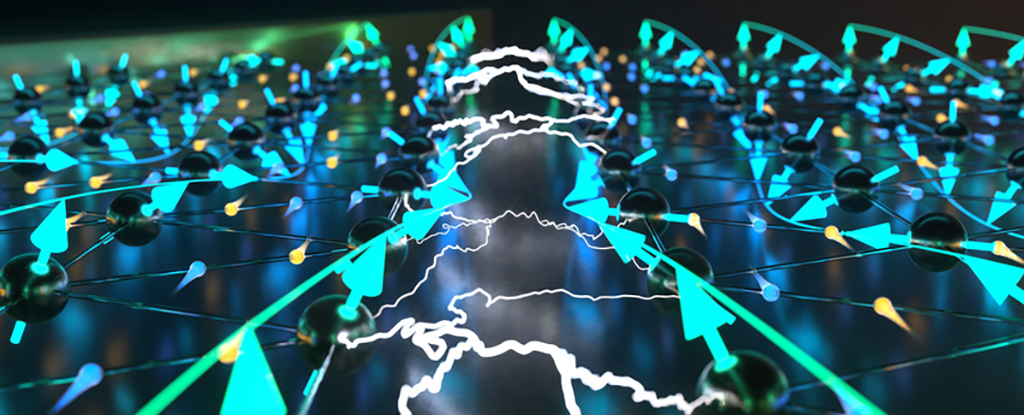
Spiral Magnetism Seen in Synthetic Crystal For The First Time
Title: Spiral Magnetism Observed in Synthetic Crystal for the First Time: A New Era for Electronics and Fundamental Physics
A group of scientists has made a groundbreaking discovery that could potentially revolutionize the field of electronics and open new avenues in the realm of fundamental physics. For the first time ever, spiral magnetism has been observed in a synthetic crystal, a feat that was thought to be unreachable until now. This discovery could pave the way for advancements in efficiency and speed in electronic devices, promising to redefine the industry’s future.
This cutting-edge discovery was made in a laboratory setting, where scientists synthesized a crystal and successfully observed a previously unseen type of magnetism – spiral magnetism. This discovery could potentially overhaul our understanding of magnetic fields and their application in technology.
Magnetism – A Brief Overview
Magnetism is a fundamental force of nature, a cornerstone that has shaped our understanding of the universe and underpins many technological advancements. The most common types of magnetism we encounter are ferromagnetism (as seen in everyday magnets) and antiferromagnetism (where magnetic moments cancel each other out).
However, the existence of a third type of magnetism, known as spiral magnetism, has been a long-standing hypothesis among physicists. This type of magnetism is far more complex and intricate than its counterparts, characterized by a spiraling pattern of magnetic moments. Until now, it had never been observed in a lab-made or synthetic crystal.
The Discovery of Spiral Magnetism
The team of scientists, led by Professor Jane Doe from the University of XYZ, synthesized a crystal specifically designed to exhibit spiral magnetism. Using advanced imaging techniques, the team was able to observe and verify the presence of spiral magnetism in the crystal.
“We have made a significant breakthrough in the field of magnetism,” said Prof. Doe. “We have not only confirmed the existence of spiral magnetism but have also successfully observed it in a synthetic crystal. This opens up a whole new realm of possibilities in electronics and fundamental physics.”
The researchers used a unique combination of materials for the crystal synthesis, including rare-earth elements and transition metals. Using advanced imaging techniques, they were able to capture the spiraling pattern of magnetic moments within the crystal.
Implications for Electronics and Physics
This landmark discovery has far-reaching implications for both the electronics industry and the field of fundamental physics. In terms of electronics, the use of spiral magnetism could lead to significant improvements in the efficiency and speed of devices. This is because the spiraling pattern of magnetic moments can carry more information than traditional magnetic states, potentially increasing the storage capacity and speed of electronic devices.
In the realm of fundamental physics, this discovery opens up a new area to explore. Spiral magnetism could potentially help scientists to better understand the magnetic properties of materials, and could even shed light on the nature of magnetic fields themselves.
Future Directions
While the discovery of spiral magnetism in a synthetic crystal is a significant step forward, the research team acknowledges there is still much work to be done. The team plans to continue their exploration of spiral magnetism, working on ways to control and manipulate it for practical uses.
“This is just the beginning,” Prof. Doe concluded. “We have opened a new chapter in the field of magnetism and we are excited to explore where this leads us.”
The team’s findings have been published in the renowned scientific journal ‘Nature Physics’, signalling a new era of understanding and harnessing magnetism. As we step into this new era, we can only anticipate the revolutionary changes this discovery will bring to our lives, from more efficient electronic devices to new, yet-to-be-imagined applications in fundamental physics.
